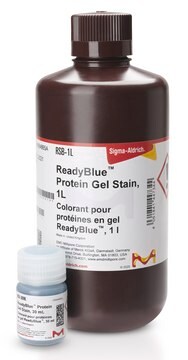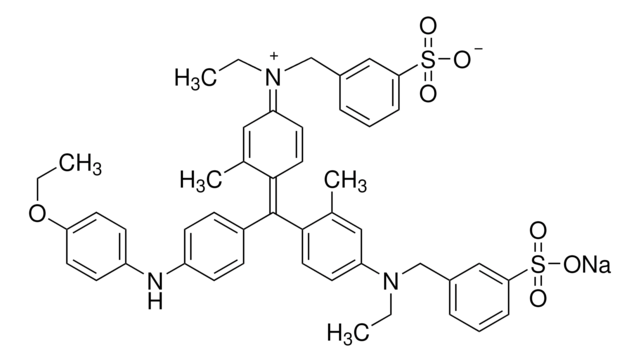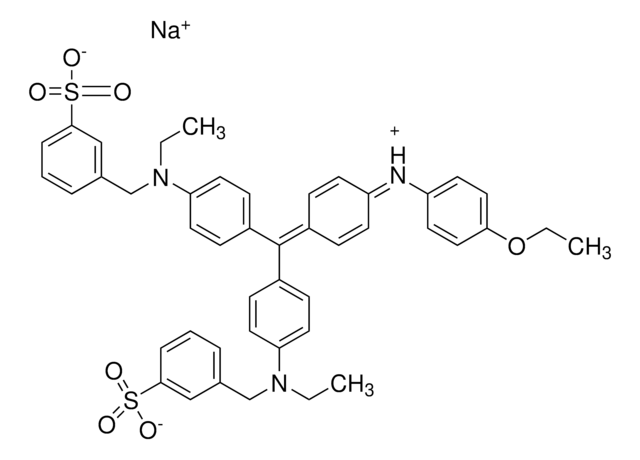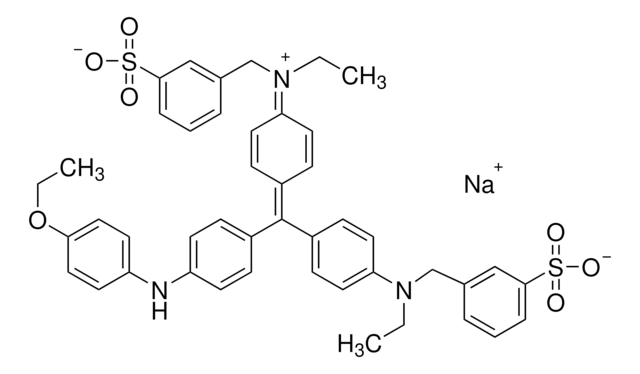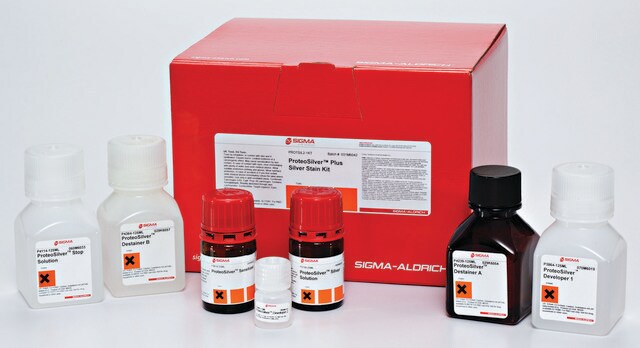G1041
EZBlue™ Gel Staining Reagent
Sinônimo(s):
protein gel stain, protein stain
About This Item
Produtos recomendados
Descrição geral
Aplicação
Características e benefícios
- Premixed solution eliminates the time and effort required to prepare the stain
- Increased sensitivity ensures that low abundance proteins can be detected (as little as 5 ng)
- Rapid reaction significantly reduces the amount of time required to stain and rinse
- No solvent waste so you save time and money by eliminating hazardous material disposal
Outras notas
Informações legais
produto relacionado
Palavra indicadora
Warning
Frases de perigo
Declarações de precaução
Classificações de perigo
Eye Irrit. 2 - Met. Corr. 1 - Skin Irrit. 2 - STOT SE 2
Órgãos-alvo
Eyes,Central nervous system
Código de classe de armazenamento
8A - Combustible corrosive hazardous materials
Classe de risco de água (WGK)
WGK 2
Ponto de fulgor (°F)
Not applicable
Ponto de fulgor (°C)
Not applicable
Equipamento de proteção individual
Faceshields, Gloves, Goggles, type ABEK (EN14387) respirator filter
Certificados de análise (COA)
Busque Certificados de análise (COA) digitando o Número do Lote do produto. Os números de lote e remessa podem ser encontrados no rótulo de um produto após a palavra “Lot” ou “Batch”.
Já possui este produto?
Encontre a documentação dos produtos que você adquiriu recentemente na biblioteca de documentos.
Os clientes também visualizaram
Artigos
This page describes common challenges encountered when lysing cells and extracting proteins prior to Western blotting. Total protein concentration must be determined for these cell lysates. Variables affecting each of these steps are outlined below, as each could affect the sensitivity and reproducibility of the Western blot.
The possible causes and potential remedies for challenges encountered in the immunoprecipitation-Western blot technique, which consists of cell lysis, formation of the antibody-antigen (immune) complex, precipitation of the immune complexes, and analysis by Western blotting.
The possible causes and potential remedies for challenges encountered during preparation of samples for SDS-PAGE (sodium dodecyl sulfate polyacrylamide gel electrophoresis) and optimizing electrophoresis conditions.
The use of PNGase Fast denaturing buffer and enzyme yielded results similar to a conventional 20-hour protocol with overnight digest while reducing workflow time to about 1 hour with a 15-minute digest.
Nossa equipe de cientistas tem experiência em todas as áreas de pesquisa, incluindo Life Sciences, ciência de materiais, síntese química, cromatografia, química analítica e muitas outras.
Entre em contato com a assistência técnica